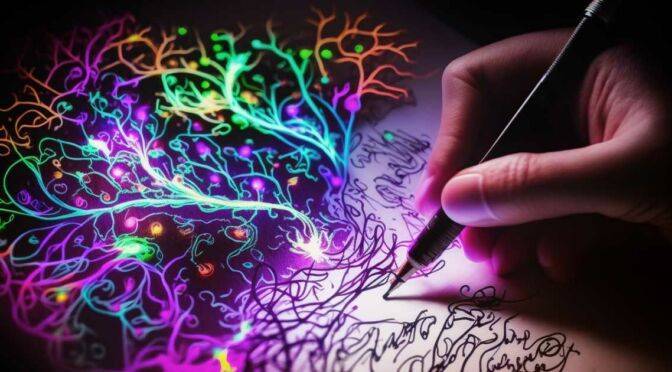NOTE: This article is intended for educational purposes only. If you are struggling with trauma, we highly recommend that you seek the help of a licensed therapist.
A sense of positivity is essential for our wellbeing.
Positivity enables us to have a well-connected brain.
Conversely, negativity triggers neurotoxins that poison the brain.
Unfortunately, life is often harsh and tragic. It is hard to maintain a positive mentality when we experience horrible things.
So, to live our lives to the fullest, we need to develop a skill-set that helps us stay rooted in a positive mindset in the midst of the traumas we experience over the course of our lives.
For many, feelings of anger, fear and sadness from past traumas seem insurmountable. Once their traumatic memories are triggered, they become overwhelmed with debilitating emotions.
Fortunately, there are powerful, research-backed techniques that regulate and dramatically weaken these crippling feelings.
Many trauma therapists suggest that if you do something pleasurable when a painful memory comes up, the pleasure interrupts the pain, anger, and fear sparked in the brain.
Theory of memory strongly suggests that painful memories get altered when they are recalled in a relaxed and pleasant way. The next time the memory gets recalled, some of that relaxation and pleasure gets embedded into the memory circuit. The result is that the person does not feel the full impact of the original trauma. The trauma becomes neurologically weakened.
On the other hand, if you talk about or dwell on the trauma without being extraordinarily relaxed, you end up traumatizing yourself more. You end up strengthening that trauma in your brain.
An outstanding way to achieve a relaxed state is to yawn, stretch, and then stroke your hands, arms or face in an exquisitely mindful and enjoyable way.
Sensory-awareness through self-touch is a proven technique to increase one’s sense of groundedness. It helps the brain build a stronger self-image. Meanwhile, the pleasurable sensations weaken the effects of the traumatic memory.
When in a relaxed state, you can more safely allow yourself to visualize and recall a trauma. It is best to limit your visualization to one small piece at a time. You can allow yourself to feel the feelings, and let them float away. This way, you end up turning down the volume of negativity in your mind.
Concurrently, whenever anything positive comes to mind, spend a moment to deeply connect and savor those feelings. Turn up the volume on thoughts about your successes, your confidence, and your positive self-esteem. By deeply experiencing the good, you wire your brain for positivity.

Dive Deeper
Mindfulness in the treatment of posttraumatic stress disorder among military veterans.
Vujanovic AA, Niles B, Pietrefesa A, Schmertz SK., Potter CM. Prof Psychol Res Pr. 2011 Feb 1;42(1):24-31.
Self-Determination and the Neurology of Mindfulness
Journal of Humanistic Psychology October 2006 46: 474-493
Self-affirmation activates brain systems associated with self-related processing and reward and is reinforced by future orientation.
Cascio CN, O'Donnell MB, Tinney FJ Jr, Lieberman MD, Taylor SE, Strecher VJ, Falk EB. Soc Cogn Affect Neurosci. 2015 Nov 5.
J Pers Soc Psychol. 2013 Apr;104(4):591-618. doi: 10.1037/a0031495. Epub 2013 Feb 11. Deflecting the trajectory and changing the narrative: how self-affirmation affects academic performance and motivation under identity threat.
Sherman DK1, Hartson KA, Binning KR, Purdie-Vaughns V, Garcia J, Taborsky-Barba S, Tomassetti S, Nussbaum AD, Cohen GL.
Brief report: Effects of exercise and self-affirmation intervention after traumatic brain injury.
Lee YS, Ashman T, Shang A, Suzuki W. NeuroRehabilitation. 2014;35(1):57-65.
Bodily pleasure matters: velocity of touch modulates body ownership during the rubber hand illusion.
Crucianelli L, Metcalf NK, Fotopoulou AK, Jenkinson PM. Front Psychol. 2013 Oct 8;4:703.
An fMRI study on cortical responses during active self-touch and passive touch from others.
Ackerley R, Hassan E, Curran A, Wessberg J, Olausson H, McGlone F. Front Behav Neurosci. 2012 Aug 7;6:51.
2-3X Your
Learning Speed

Kensho: Short Film Perfectly Captures “The Dream of Life”
Kenshō (見性): A Japanese term from the Zen tradition. Ken means “seeing,” shō means “nature, essence” If you awaken from

NeuroTip: Creative Writing Improves the Health of Your Mind
“Life is sometimes hard. Things go wrong, in life and in love, and in business, and in friendship, and in

The Science of Weakening Trauma and Becoming More Positive
NOTE: This article is intended for educational purposes only. If you are struggling with trauma, we highly recommend that you

Yawning is the Fastest Way to Hack Mental Stress and Focus
Most people think of yawning as just a sign of either being as bored as a sentient statue, or needing


This is so right on, good article. The only thing I question and possibly disagree with is "It is best to limit your visualization to one small piece at a time."
~ maurybrooks
Thanks for the kind words, Maury! – Josiah
Very helpful, Josiah. Thank you.
Honored to contribute~ Thanks for letting me know. – Josiah